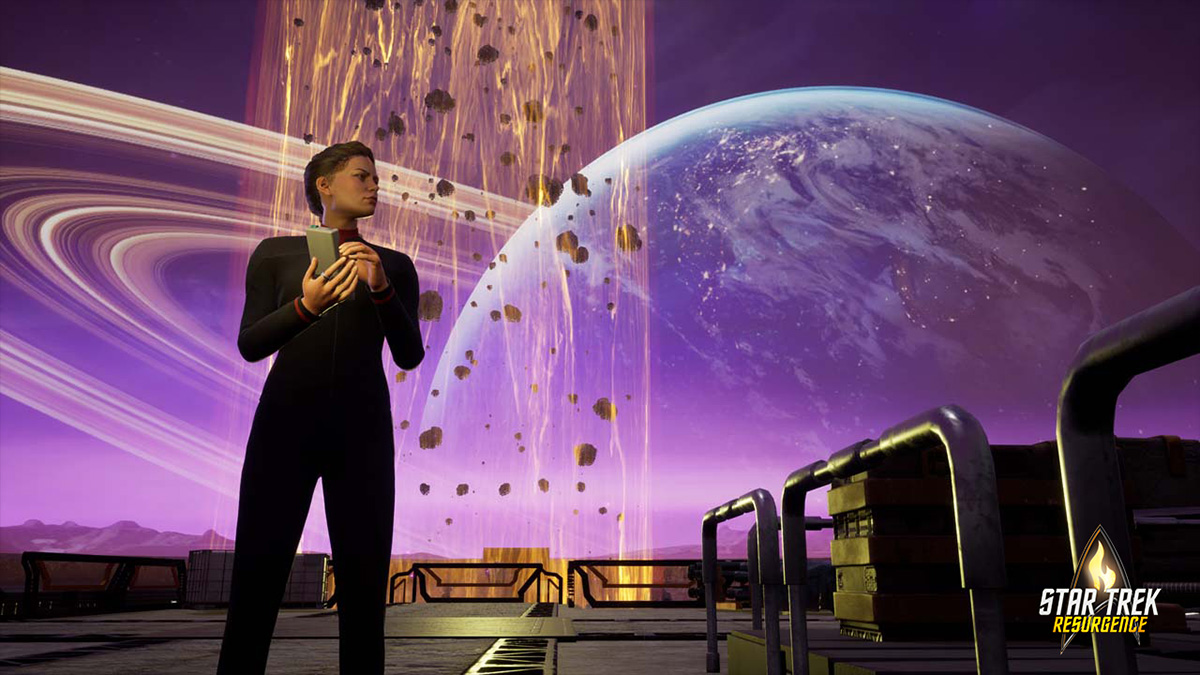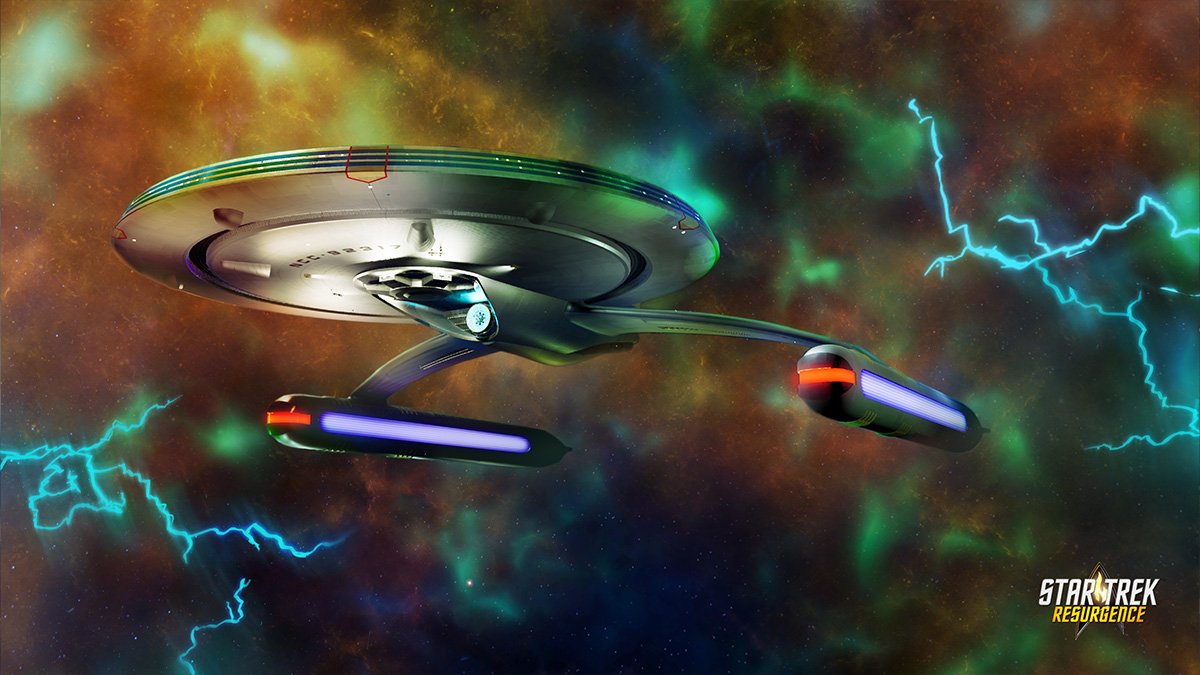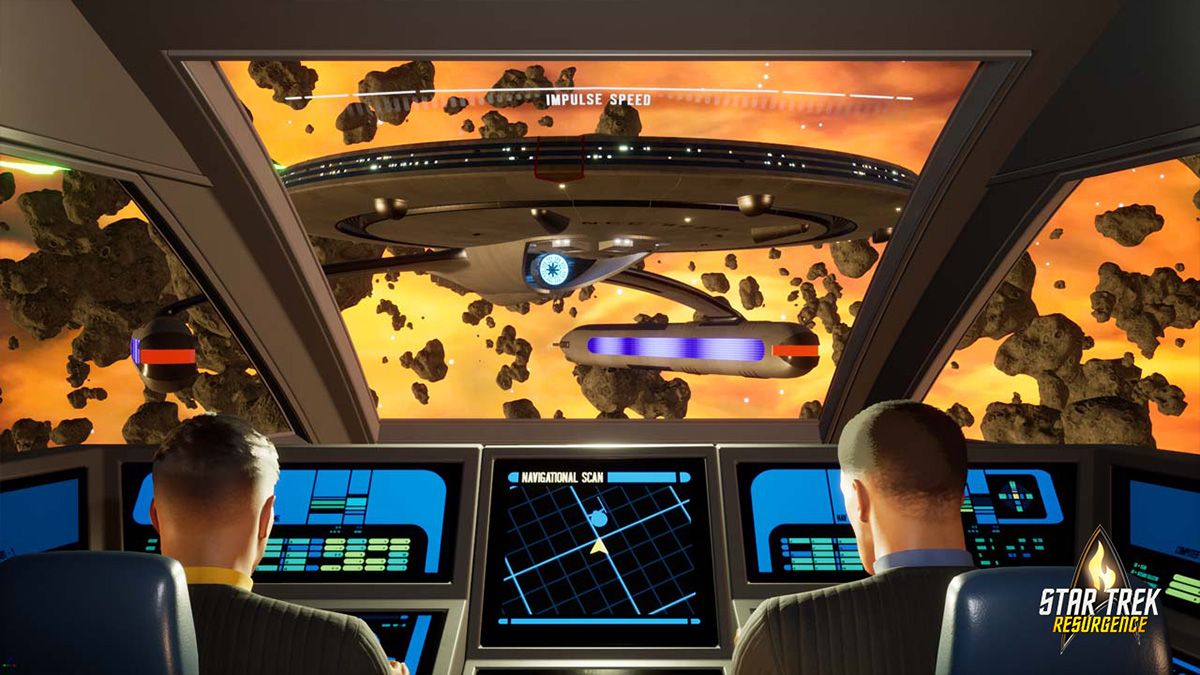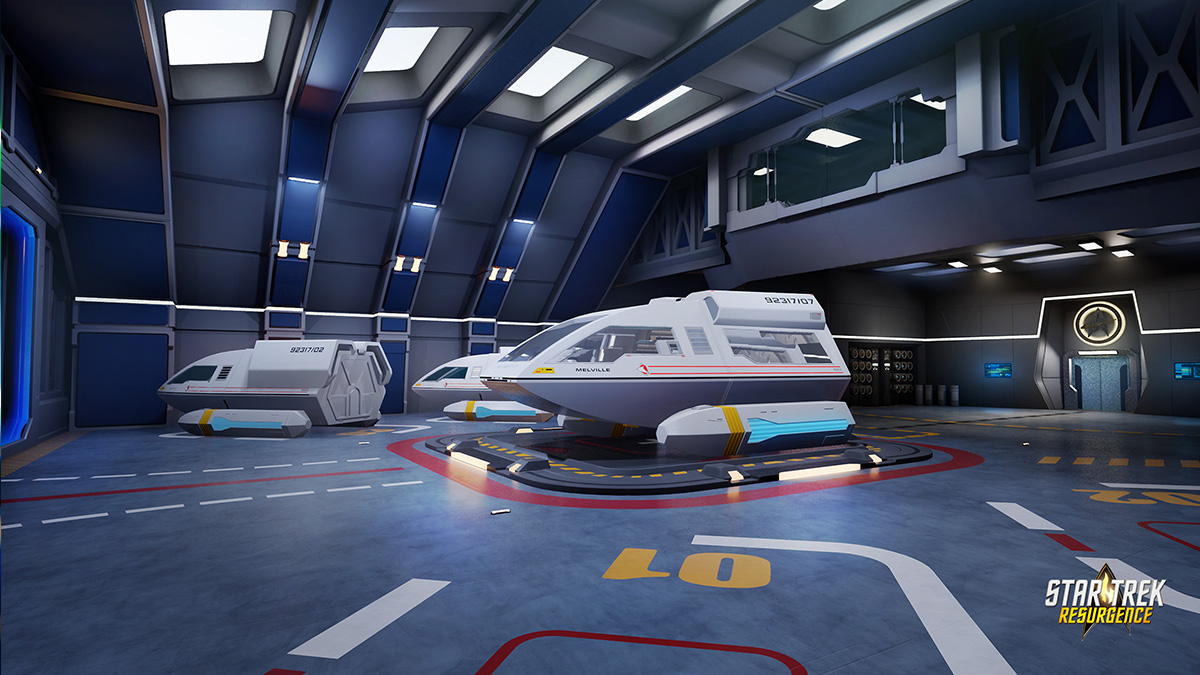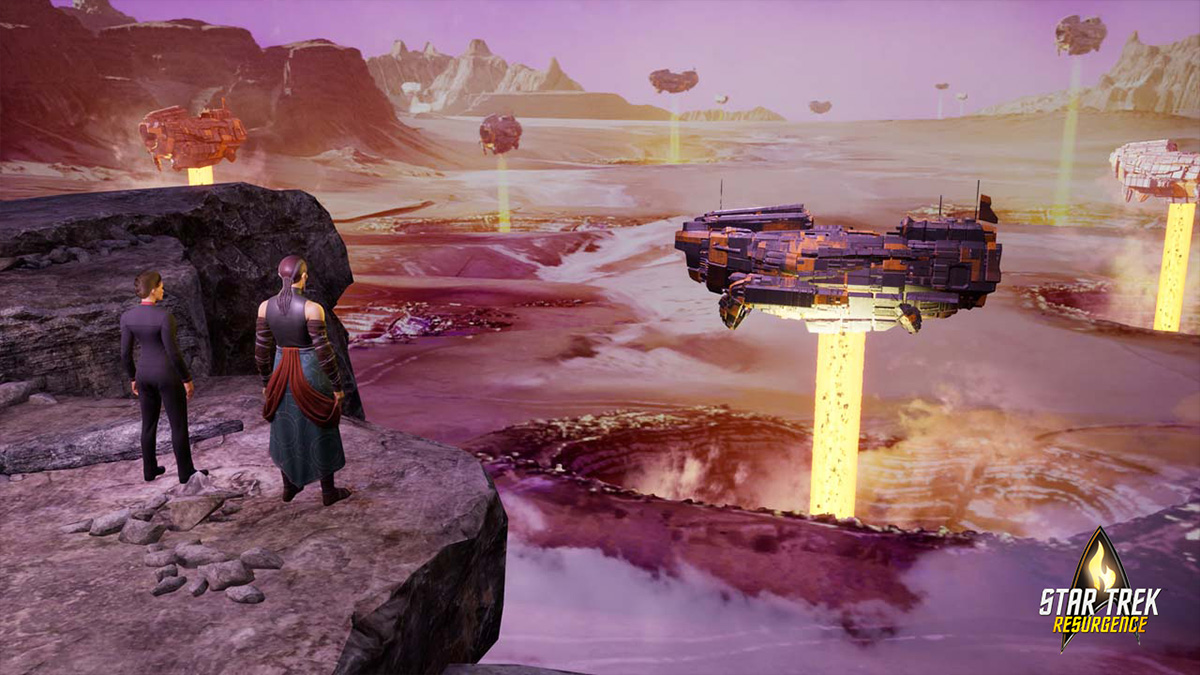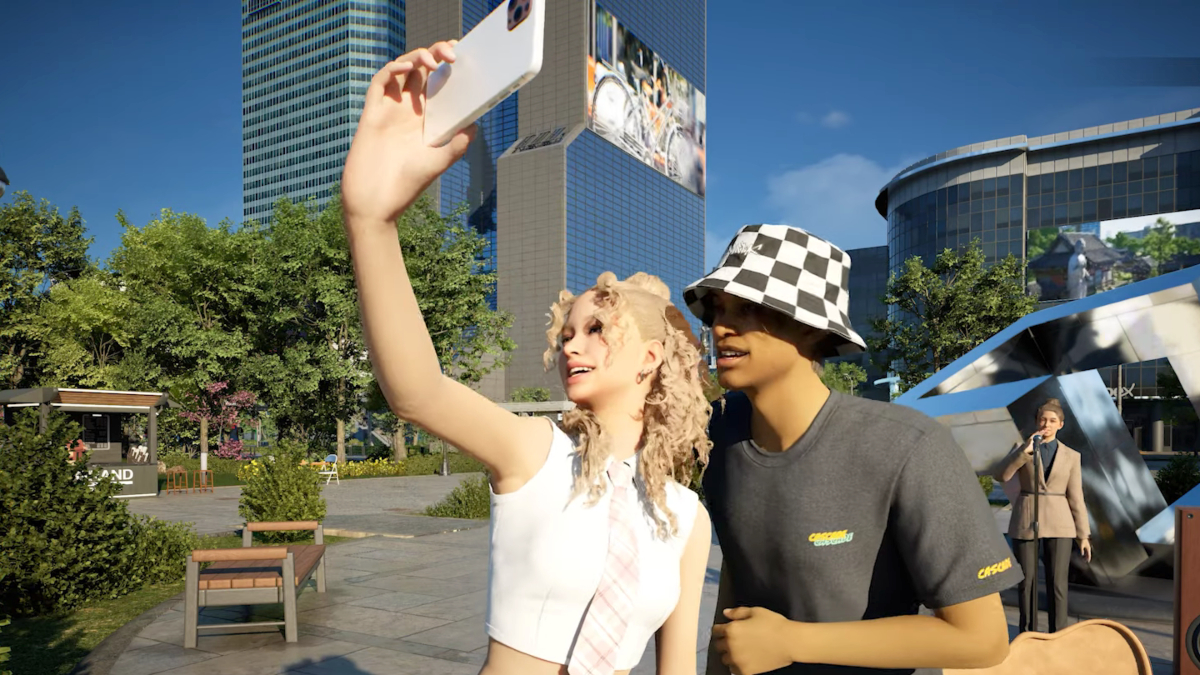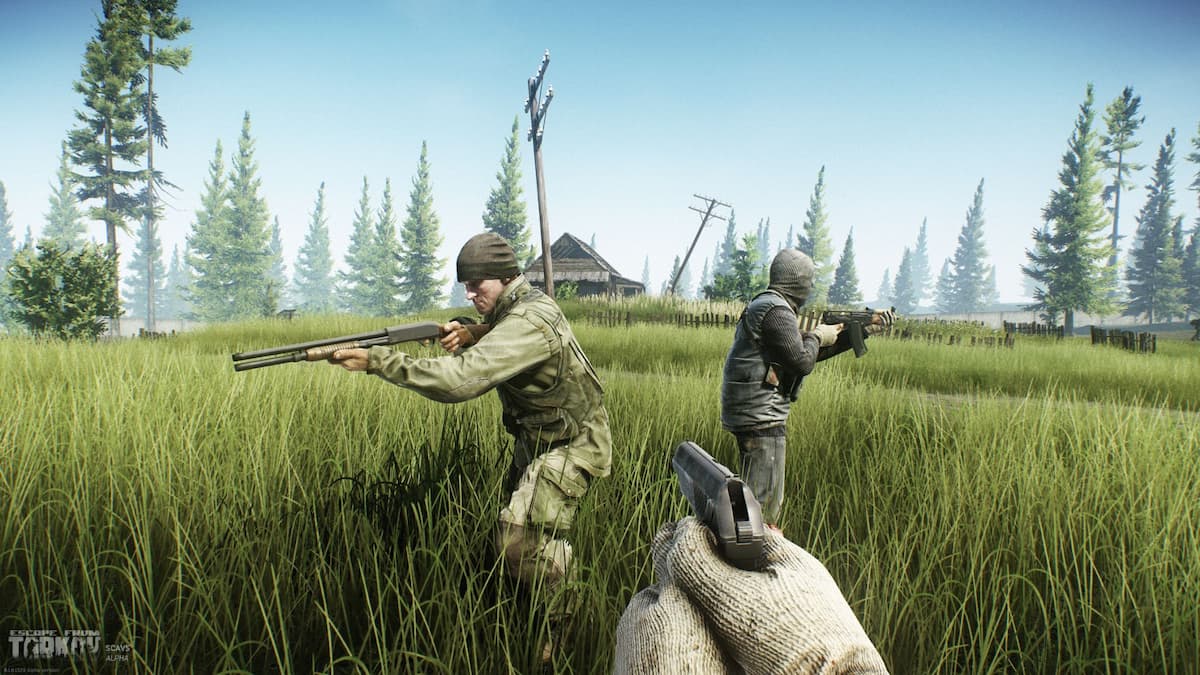At its core, Star Trek: Resurgence is a love letter to one of the greatest science fiction franchises of all time. The set pieces, cameos, incredible writing, depth of lore — all speak to the five-man team at Dramatic Labs’ love for the series. While the passion is there, evident in every lovingly sculpted character model, space vista, and regulation hallway, Dramatic Lab missed the mark with the most critical aspect: gameplay. Simply put, Star Trek: Resurgence struggles to be fun.
That isn’t to say that Star Trek fans won’t appreciate and even thoroughly enjoy the story at the heart of Resurgence. Its 15-20 hours long journey is filled with heart. The writing is clever, the characters are believable and varied, and the narrative does a great job of setting up allegiances and conflicts. I frequently found myself wrapped up in the story, which follows Jara Rydek, the newly appointed first officer of the Resolute as she ingratiates herself to the crew, and Carter Diaz, an extremely likable and talented engineer on the lower decks.
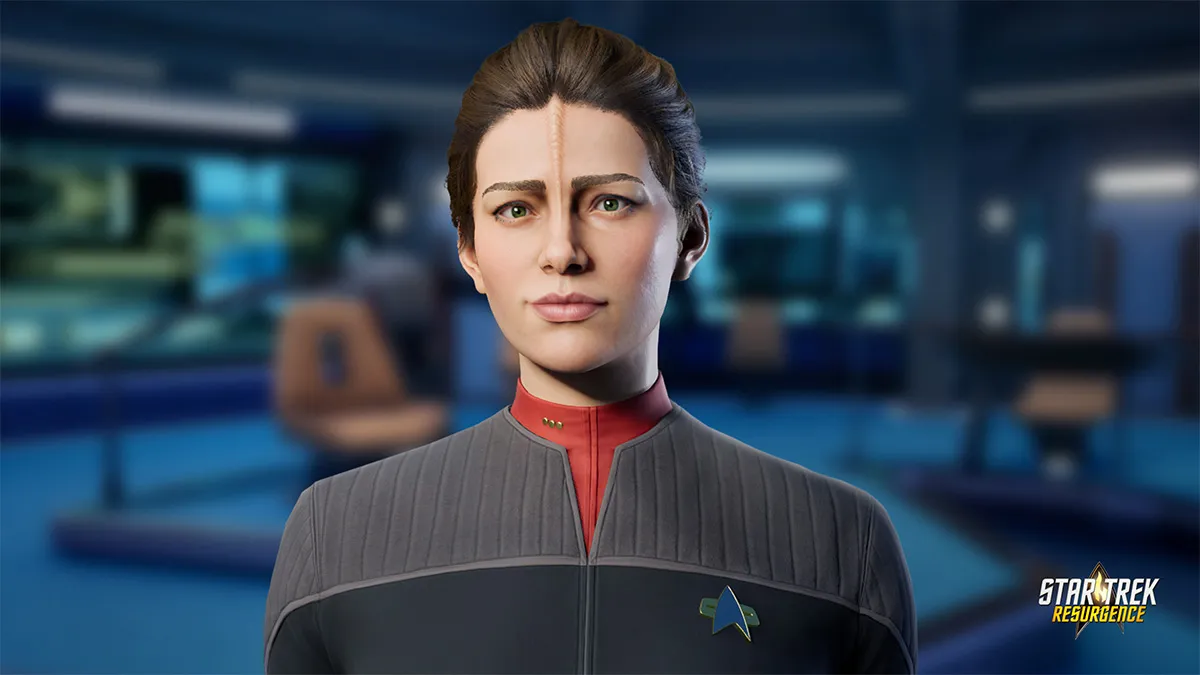
As Carter, you interact with much more of the crew. He’s been a staple of the research vessel for years, staying aboard after a catastrophic incident that still weighs heavily on the crew’s minds. He fixes teleporters, researches unknown alien artifacts, and frequently comes up with last-minute workarounds to save the day. Jara is much more diplomatic, mostly engaging in discussions and negotiations, though she does lead every away party and frequently lands herself in trouble. The character models are lovingly crafted for the main cast, even if their facial animations are lacking. Characters have maybe five different expressions, so it gets fairly easy to discern when someone has their “suspicious” face on and should be questioned. Despite this, Jara and Carter’s interactions with their surroundings are still enjoyable, though I could never tell if Carter was perpetually surprised or if he just looked that way.
Their story weaves perfectly together, allowing players to see how their actions on the bridge can affect the many unnamed support units on the ship. The narrative deals with morally grey areas (even if some of them are a little on the nose) and easily balances what players’ instincts are with how a true Starfleet captain would respond in dire situations. The pressures to conform to Starfleet’s regulations depends on which bridge officers you choose to align with, with some of them sticklers for regulation and others genocidal maniacs. I frequently found myself lingering on the story, wondering how it would turn out, genuinely excited to pick up my controller again just to see how I could get my crew – and the many Federation citizens – out of harm’s way.
Except, as the game progresses, those simple minigame-like interactions start to compound into tedium. They consist of one of your controller’s triggers at the appropriate time, spinning a joystick, or trying to center a reticle. Sometimes they work into the story well, but most are just a means to an end. I regularly felt as though Resurgence was holding my hand when it didn’t need to, only to throw me into a sink-or-swim situation with no explanation — not that I encountered a moment where my swiftness mattered. Failing to choose an option usually resulted in a pause, or an immediate death and a situation restart. Despite this, some moments work quite well, but that’s the case in less than half of your encounters. For the rest, their tedium verges on unforgivable.
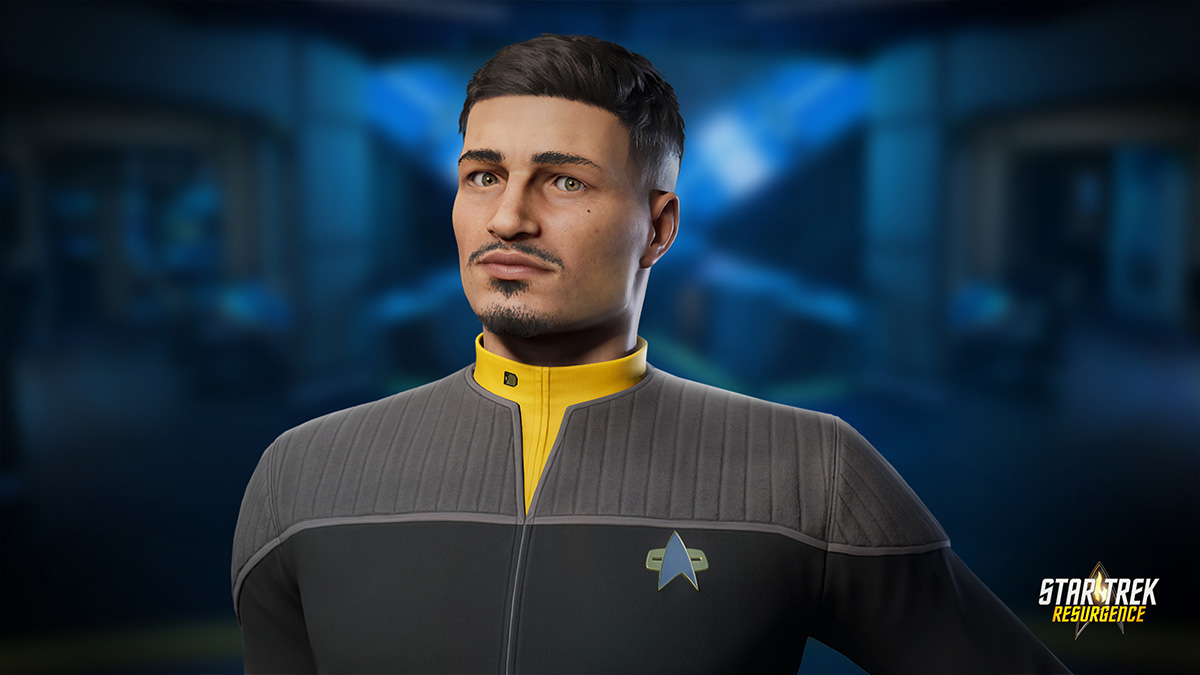
As Carter, there are a lot of required interactive moments. In the beginning, these are purposeful and thought out, but as the game progressed, I couldn’t help but feel that — rather than expand on the foundation of the interactions — Dramatic Labs decided to muddy the controls. Rather than make meaningful adjustments, they chose to mire movement arbitrarily, which makes interacting with the world a complete slog. Multiple encounters were so tedious that they sucked the joy out of the story and I found myself frustrated that I even had to play the game, like the interactivity of it all was a chore. When the actual act of playing becomes the least engaging part of a video game, you know you have a problem.
This lack of fun doesn’t extend to every interactive moment, but it plagues enough of them that being on world — where interaction is required — comes with a small amount of dread. Combat is less than thrilling, though it does shake up the pace of the story. Unfortunately, you’ll encounter the same basic minigames so many times you’ll be able to solve them with your eyes closed. Even using the iconic Tricorder to locate information becomes frustrating.
Sometimes, these interactions are straightforward — you turn on your little device, scan the thing, talk about the thing with the rest of your away team, and move on. But in other investigative moments, the scannable interactions are arbitrarily revealed. You’ll be examining a screen, certain you’ve completed the grid sweep and revealed nothing, only to find that since activating the last point, there are suddenly — and inexplicably — pieces of information that your tricorder just missed. It’s frustrating at worst and annoying at best.
These monotonous info-gathering sessions are required to make the best decisions and progress the story, so there is no way around them except to wander every room, Tricorder trilling incessantly while you seek out whatever reaction point will draw the tedious detective work to an end. That leads me to another complaint — the sound design is either total garbage, or plagued by one of the worst audio bugs I’ve encountered in a long time.
Despite the incredible story and writing, there’s a dialogue bug that will leave you scrambling. Lines frequently cut out halfway through or are outright skipped. I was grateful that I turned on subtitles, otherwise, I would have had to make several decisions blindly, without any context whatsoever. Even worse were the decisions Resurgence made for me during the more extensive narrative meltdowns. While the writing is tight, some of the more dramatic moments had their intensity leeched away as I desperately tried to gain my bearings and figure out what exactly just happened, and what decision I needed to make. It’s a shame because Resurgence is telling such a tight story that the missing information feels like it could have changed your decision.
That’s not the only place Resurgence struggles with audio. While the game starts on a strong note as far as sound design goes, it quickly starts to slip. As mentioned, the audio cuts out regularly, so subtitles are a necessity (though they don’t always represent the story your choices have created). The lack of ambient sound takes away from many of the scenes, leaving them hollow and flat. Combine that with the lack of shading in exterior locations, and you have many cinematic moments that look as empty as they sound. This is compounded by several explorable alien planets that consist of winding narrow canyons and spares shrubbery. It makes you wonder why such expansive, barren areas were created when they lend nothing to the story and only serve to showcase lackluster environments.
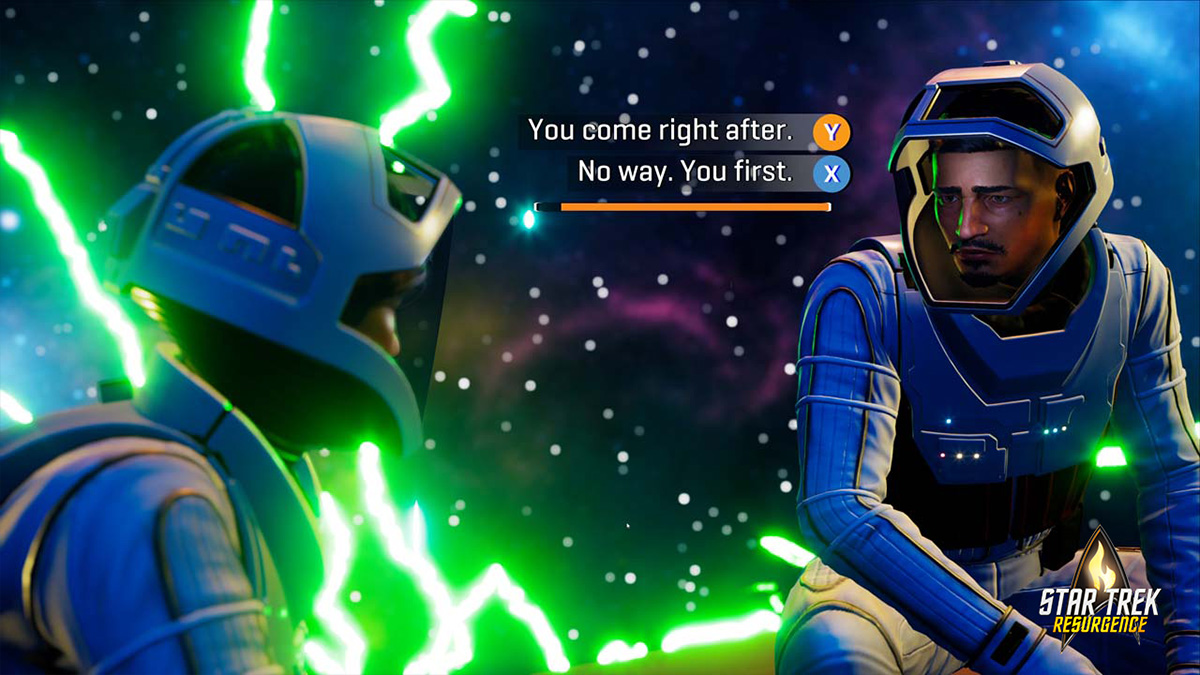
It’s a real shame. The narrative does an incredible job of setting up epic space battles and dramatic confrontations with enemies, but the execution of these encounters feels hokie and flat. There were multiple cinematic moments in space that reminded me of the early 3D art made in the 90s—overly processed and egregiously lit— coming together to form a vibrant smorgasbord with no substance. These set pieces really could have been amazing if the time wasted on long useless “exploration” areas had been redirected into them instead.
For many, the most egregious sin will be the dramatic frame rate drops that hit without fail during high-octane cinematics. The judder and skipping sucked the joy out of these epic space battles and turned them into nauseating and confusing facsimiles of cutscenes. Resurgence‘s finale, which should have had me on the edge of my seat, instead had me focused on the half-rendered allies and the miraculous way my starship could “teleport” from one edge of the screen to the other.
Star Trek: Resurgence does a phenomenal job of letting you ride shotgun in an episode of its mother series. The story is lovingly crafted and sure to appease any fan of Star Trek. What’s more, the tight writing doesn’t rely too heavily on players having a background in the franchise, but there are enough callbacks that diehard fans will no doubt be thrilled to see some of their favorite moments, characters, or lore. Outside of its story, however, Resurgence has nothing to offer. Its minigames are bland, the ambitious art is poorly executed, its level design is practically non-existent, and the sound design leaves plenty to be desired. Layer on an abundance of moment-spoiling bugs, and Star Trek: Resurgence becomes a disappointing first outing for the fledgling studio.
This review is based on the PlayStation 4 version of the game. A review copy was provided to us by Dramatic Labs.

